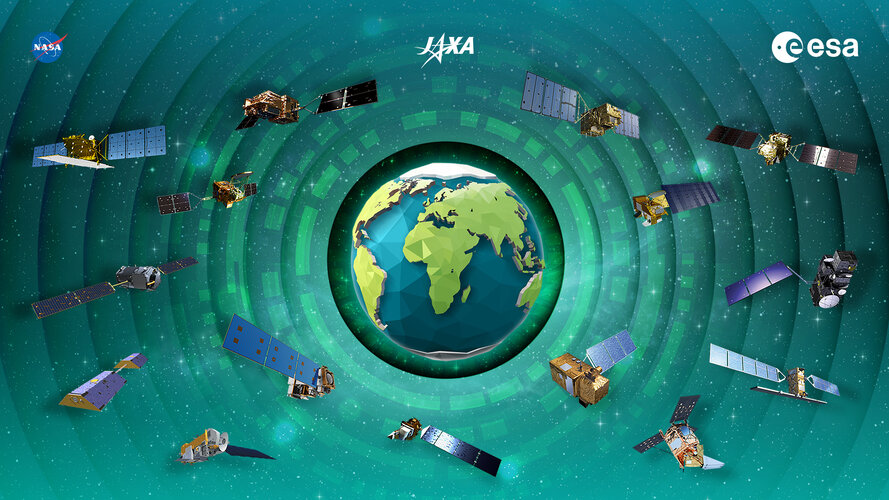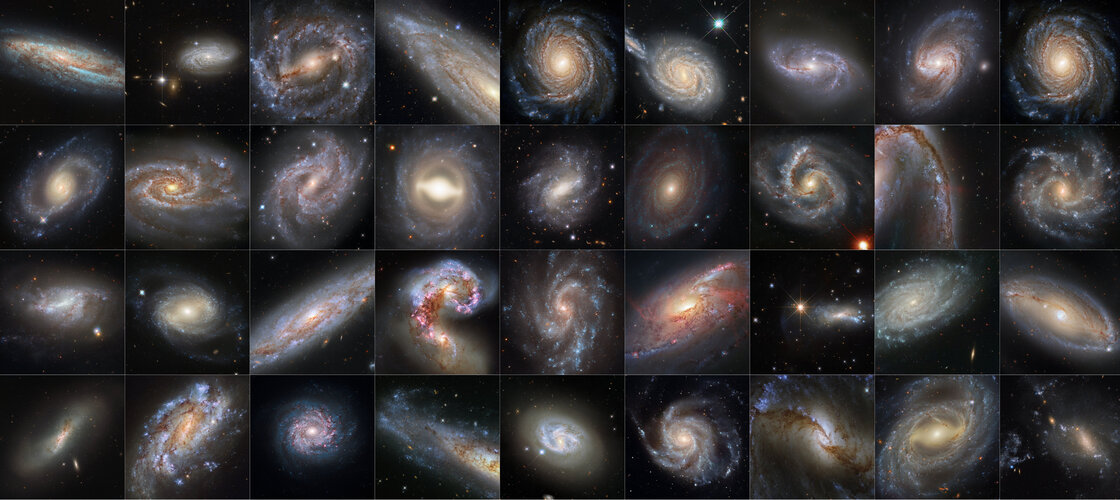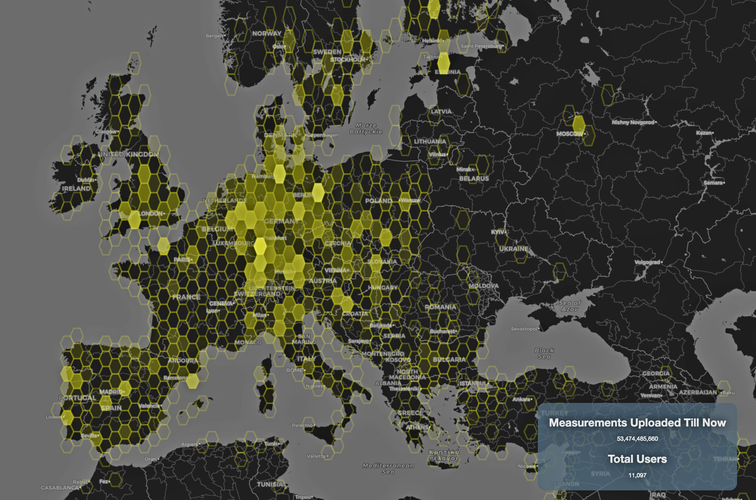
Copernical Team
Space agencies provide global view of our changing environment

International collaboration among space agencies is central to the success of satellite Earth observation and data analysis. ESA, NASA and JAXA (Japan Aerospace Exploration Agency) have continued their joined effort to develop a storytelling dashboard that combines their resources and expertise to strengthen our global understanding of the changing environment and its economic effects.
A dazzling Hubble collection of supernova host galaxies
 Image:
A dazzling Hubble collection of supernova host galaxies
Image:
A dazzling Hubble collection of supernova host galaxies Volunteers watching the skies
 Image:
Volunteers watching the skies
Image:
Volunteers watching the skies Physicists explain how type of aurora on Mars is formed
 Physicists led by the University of Iowa have learned how a type of aurora on Mars is formed. In a new study, the physicists studied discrete aurora, a light-in-the-sky display that occurs mostly during the night in the red planet's southern hemisphere. While scientists have known about discrete aurora on Mars-which also occur on Earth-they did not know how they formed. That's because Mars does
Physicists led by the University of Iowa have learned how a type of aurora on Mars is formed. In a new study, the physicists studied discrete aurora, a light-in-the-sky display that occurs mostly during the night in the red planet's southern hemisphere. While scientists have known about discrete aurora on Mars-which also occur on Earth-they did not know how they formed. That's because Mars does Status Update on NASA's MAVEN Spacecraft
 On February 22, 2022, NASA's MAVEN spacecraft went into safe mode when the spacecraft's Inertial Measurement Units (IMUs) began exhibiting anomalous behavior. The spacecraft is currently out of safe mode, stable and in Earth-nadir mode, pointing its high gain antenna toward Earth to facilitate high-rate communications. In this configuration, however, MAVEN cannot perform communications relays fo
On February 22, 2022, NASA's MAVEN spacecraft went into safe mode when the spacecraft's Inertial Measurement Units (IMUs) began exhibiting anomalous behavior. The spacecraft is currently out of safe mode, stable and in Earth-nadir mode, pointing its high gain antenna toward Earth to facilitate high-rate communications. In this configuration, however, MAVEN cannot perform communications relays fo Inmarsat ELEVATE launched to accelerate IoT industry growth
 CAPTION ELEVATE will bring together development program, partner ecosystem, online marketplace to enable businesses around the world to harness industrial IoT success
With more businesses recognising the impact of IoT technologies on their operations and on the world, and the number of global satellite IoT connections set to continue growing at a 25% CAGR [Source: Omdia] in the coming years, th
CAPTION ELEVATE will bring together development program, partner ecosystem, online marketplace to enable businesses around the world to harness industrial IoT success
With more businesses recognising the impact of IoT technologies on their operations and on the world, and the number of global satellite IoT connections set to continue growing at a 25% CAGR [Source: Omdia] in the coming years, th US Air Force and Lockheed Martin complete ARRW hypersonic boosted test flight
 The U.S. Air Force and Lockheed Martin have jointly conducted a hypersonic-boosted flight test of the AGM-183A Air-launched Rapid Response Weapon (ARRW) from the service's B-52H Stratofortress.
The successful flight demonstrates the weapon's ability to reach and withstand operational hypersonic speeds, collect crucial data for use in further flight tests, and validate safe separation from
The U.S. Air Force and Lockheed Martin have jointly conducted a hypersonic-boosted flight test of the AGM-183A Air-launched Rapid Response Weapon (ARRW) from the service's B-52H Stratofortress.
The successful flight demonstrates the weapon's ability to reach and withstand operational hypersonic speeds, collect crucial data for use in further flight tests, and validate safe separation from China's self-developed floating airship breaks record
 China's self-developed floating airship, designed for atmosphere observation, reached a record altitude of 9,032 meters in Tibet Autonomous Region on Sunday, according to its developer.
Developed by the Aerospace Information Research Institute of the Chinese Academy of Sciences (CAS), the floating airship "Jimu No.1" type III has a volume of 9,060 cubic meters.
The floating airship c
China's self-developed floating airship, designed for atmosphere observation, reached a record altitude of 9,032 meters in Tibet Autonomous Region on Sunday, according to its developer.
Developed by the Aerospace Information Research Institute of the Chinese Academy of Sciences (CAS), the floating airship "Jimu No.1" type III has a volume of 9,060 cubic meters.
The floating airship c SpaceX successfully launches rocket carrying 53 Starlink satellites
 SpaceX launched 53 Starlink satellites into orbit Wednesday, while also successfully recovering its two-stage Falcon 9 rocket, the company announced.
The company shared photos of the used Falcon 9 rocket taking off from its Florida launch pad and later setting down in the ocean aboard one of its autonomous drone ships.
"Falcon 9 has successfully lifted off carrying our 53 Starlink sa
SpaceX launched 53 Starlink satellites into orbit Wednesday, while also successfully recovering its two-stage Falcon 9 rocket, the company announced.
The company shared photos of the used Falcon 9 rocket taking off from its Florida launch pad and later setting down in the ocean aboard one of its autonomous drone ships.
"Falcon 9 has successfully lifted off carrying our 53 Starlink sa The origin of life: A paradigm shift
 According to a new concept by LMU chemists led by Thomas Carell, it was a novel molecular species composed out of RNA and peptides that set in motion the evolution of life into more complex forms
Investigating the question as to how life could emerge long ago on the early Earth is one of the most fascinating challenges for science. Which conditions must have prevailed for the basic buildin
According to a new concept by LMU chemists led by Thomas Carell, it was a novel molecular species composed out of RNA and peptides that set in motion the evolution of life into more complex forms
Investigating the question as to how life could emerge long ago on the early Earth is one of the most fascinating challenges for science. Which conditions must have prevailed for the basic buildin 



































